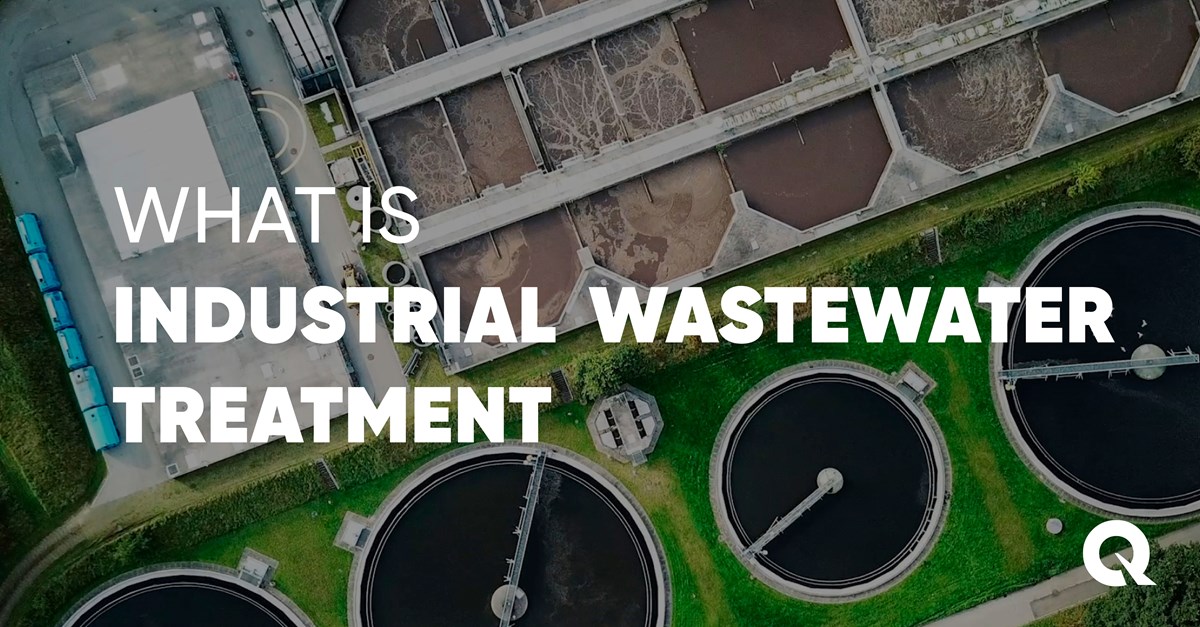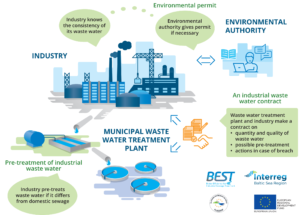Industrial Waste Water Treatment-- Efficient Waste Administration for Manufacturing Facilities
Industrial Waste Water Treatment-- Efficient Waste Administration for Manufacturing Facilities
Blog Article
Developments and Advances in Hazardous Waste Water Therapy Technologies
The landscape of industrial wastewater therapy is undertaking a transformative change, driven by innovations that boost both efficiency and sustainability. As regulatory requirements develop, the combination of AI and maker understanding right into wastewater monitoring systems assures to guarantee and enhance operations compliance.
Introduction of Drainage Treatment Technologies
Wastewater treatment technologies encompass a range of methods designed to remove impurities from commercial effluents prior to their release right into the atmosphere. These innovations are vital for preserving ecological balance and making certain conformity with environmental policies. The primary groups of wastewater therapy consist of physical, chemical, and biological approaches, each offering unique purposes based upon the nature of the pollutants present.

Organic treatment techniques use microorganisms to weaken raw material, making them especially reliable for organic-rich effluents. Techniques like activated sludge and biofilm reactors harness the natural destruction capacities of bacteria, bring about significant reductions in biochemical oxygen demand (BODY)
Advanced Purification Strategies
Advanced purification techniques represent an important advancement in the world of commercial wastewater treatment, improving the effectiveness of pollutant elimination processes. Industrial Waste Water Treatment. These techniques include a variety of modern technologies, consisting of microfiltration, ultrafiltration, nanofiltration, and turn around osmosis, which supply sequential barriers for various particle sizes and chemical frameworks
Microfiltration and ultrafiltration make use of membrane layer systems to eliminate suspended solids, germs, and larger organic molecules, improving the high quality of effluent prior to further treatment. Nanofiltration links the void in between ultrafiltration and reverse osmosis, efficiently eliminating organic compounds and divalent ions, hence lowering the lots on downstream procedures.
Reverse osmosis provides the highest level of filtration by enabling only water and small particles to pass via its semi-permeable membranes, making it optimal for recovering top notch water from industrial effluents. Recent improvements in membrane layer innovation, including the development of even more fouling-resistant and resilient products, have actually considerably improved functional performance and minimized expenses.
Incorporating these innovative filtering strategies not only enhances the total treatment procedure however also adds to sustainability efforts by enabling water reuse and source recovery in commercial settings. (Industrial Waste Water Treatment)
Organic Therapy Advancements

Additionally, the development of crafted biological systems, such as membrane bioreactors (MBRs), incorporates biological treatment with innovative membrane filtration. This integration permits higher effluent quality and minimized footprint, making it ideal for space-constrained industrial centers. Advancements in genetically engineered microbes have additionally emerged, boosting the biodegradation of certain contaminants, such as drugs and heavy steels, that are traditionally testing to remove.
In addition, the implementation of bioaugmentation approaches, where useful microbes are presented to improve the existing organic treatment procedures, has shown encouraging cause boosting treatment efficiency. These innovations collectively indicate a pattern towards more effective and lasting biological treatment methods that can adapt to the developing intricacies of industrial wastewater streams. As markets proceed to prioritize ecological conformity, these biological developments will certainly play a critical function in wastewater monitoring.

Resource Recovery Approaches
In commercial settings, the integration of source healing methods has actually become increasingly crucial for enhancing sustainability and minimizing waste. These techniques focus on removing important materials and power from wastewater streams, consequently transforming prospective pollutants into recyclable sources.
One famous approach is vitamins and mineral healing, where nitrogen and phosphorus, often present over in wastewater, are captured and transformed into fertilizers. This not only decreases ecological effects yet also gives a circular economic situation remedy for agricultural applications. Furthermore, innovations such as anaerobic food digestion enable the conversion of natural waste right into biogas, a renewable power resource that can offset fossil gas usage in commercial operations.
In addition, advanced filtering and membrane layer technologies help with the recuperation of commercial by-products such as metals and salts. These recouped materials can be reintegrated into production procedures, lowering the need for virgin resources.
Future Trends in Waste Water Administration
As sectors increasingly prioritize official site sustainability, the future of wastewater management is set to go through substantial transformations. Technological improvements, such as artificial intelligence and device knowing, will certainly allow a lot more reliable surveillance and monitoring of wastewater systems. These technologies can description predict maintenance needs, maximize therapy processes, and enhance decision-making, ultimately decreasing operational costs and environmental influence.
In addition, the assimilation of round economic situation concepts will certainly play a vital function in wastewater administration. Industries are anticipated to move towards systems that not only treat wastewater yet additionally recoup useful resources, such as nutrients, water, and energy. This transition will certainly lessen waste and promote the reuse of materials, straightening with international sustainability goals.
Arising therapy methods, such as membrane bioreactors and progressed oxidation procedures, will further boost the performance of wastewater treatment, allowing for greater high quality effluents appropriate for reuse. Additionally, regulatory structures are likely to evolve, stressing stricter standards for wastewater discharge and motivating markets to adopt cutting-edge treatment remedies.
Final Thought
In verdict, the development of commercial wastewater therapy innovations shows a considerable shift in the direction of enhanced performance and sustainability. Developments in innovative filtering techniques, biological therapies, and resource recuperation methods highlight the sector's dedication to environmental stewardship. The combination of synthetic knowledge and artificial intelligence further enhances these procedures, making sure governing compliance and advertising a round economy. Proceeded advancements in these areas will play an essential function fit the future of wastewater management and securing vital water resources.
The landscape of industrial wastewater therapy is undertaking a transformative shift, driven by advancements that improve both performance and sustainability.Wastewater therapy innovations incorporate an array of approaches made to remove contaminants from industrial effluents before their launch right into the setting.Harnessing the power of organic procedures has led to considerable advancements in the therapy of industrial wastewater.Furthermore, the application of bioaugmentation methods, where important source helpful germs are presented to improve the existing biological therapy procedures, has actually revealed appealing results in improving treatment efficiency. These technologies jointly symbolize a pattern towards even more effective and sustainable biological treatment methodologies that can adjust to the progressing complexities of industrial wastewater streams.
Report this page